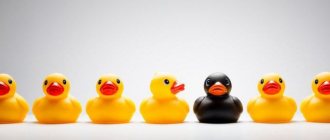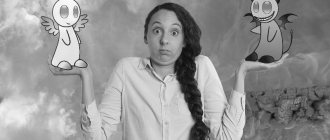- November 29, 2018
- Psychological terms
- Olgerd Semenov
What is behavior? The answer to this question is not as simple as it might seem at first glance. Behavior is the response of a system or organism to various stimuli or actions. Whether they are internal or external, conscious or subconscious, open or hidden, and voluntary or involuntary.
Understanding behavior computer science perspective, it consists of actions, operations, interactions with surrounding beings and environment and its properties. Behavior can be represented as a vector of existence. The rules of behavior are what this very vector determines.
Biological context
Biology is very closely related to the issue described in this article. Social behavior is not something that is unique to humans. It arose as a result of long-term natural selection. Although there is some disagreement about how to precisely define behavior in a biological context, one general interpretation, based on a meta-analysis of the scientific literature, states that “behavior is the internally coordinated responses (actions or inactions) of entire living organisms (individuals or groups) to internal and/or external incentives.”
A broader definition of behavior, applicable to plants and other organisms, is similar to the concept of phenotypic plasticity. It describes it as a response to an event or environmental change during a person's life that is different from other physiological or biochemical changes and occurs more quickly. At the same time, it excludes changes that are the result of development (ontogenesis). Behavior may be innate or learned from the environment. The principle of a behavior is whether it is dependent on the environment or is externally learned. That is, it is influenced by both the environment and the environment of other creatures and the will of the subject himself.
What is behavior? It can be considered as any action of the organism that changes its relationship to the environment. It provides access beyond the body into the environment.
Golden rule of behavior
In addition to the fact that we all know the generally accepted rules of behavior, there is a golden rule. It originated in ancient times, when the first essential requirements for human morality were formed. Its essence is to treat others in the way you would like to see this attitude towards yourself. Similar ideas were found in such ancient works as the teachings of Confucius, the Bible, Homer's Iliad, and so on. It is worth noting that this is one of the few beliefs that has survived to this day almost unchanged and has not lost its relevance. The positive moral significance of the golden rule is determined by the fact that it practically orients the individual towards the development of an important element in the mechanism of moral behavior - the ability to put oneself in the place of others and emotionally experience their condition. In modern morality, the golden rule of behavior is an elementary universal prerequisite for relationships between people, expressing a continuity with the moral experience of the past.
Ecology
Behavioral ecology is the study of the evolutionary basis of animal behavior due to environmental pressures. Behavioral ecology arose from ethology after Niko Tinbergen outlined four questions that should be considered in the study of animal behavior, among which are proximate causes, ontogeny, survival, and phylogeny.
If an organism has a trait that provides a selective advantage (that is, has adaptive value) in its environment, then natural selection will favor it. Adaptive meaning refers to the expression of a trait that affects fertility, as measured by an individual's reproductive success. Adaptive traits are those that produce more copies of a person's genes in future generations. Maladaptive traits are those that cause you to produce less. For example, if a bird that can sing louder attracts more mates, and singing loudly is an adaptive trait for that species because a louder bird is more common than less loud birds, thereby passing the louder genes into future generations.
How to recognize a drug addict by appearance?
There is an opinion that if a person has an unkempt appearance, then he is definitely a drug addict. This opinion is only half true. Yes, drug addicts are sloppy, unkempt people who wear old, dirty clothes, they do not shave, but recognition by these signs is possible only in the later stages of addiction, when it comes to hard drugs, for example, krokodil, heroin, cocaine.
Drug addicts are antisocial in appearance - this is a wrong and dangerous opinion. It often happens that an addicted person takes care of himself and his appearance, dresses in clean, fashionable clothes. They are polite in conversation and make a good impression.
It is quite simple to identify a drug addict: his politeness instantly disappears if he is not satisfied with something or does not like it. Subsequently, irritability and aggression set in. The addict reacts inappropriately to the words spoken, and psychotic laughter may appear. During a long conversation with a dependent person, anxiety comes over him, and gesticulation is accompanied by sudden movements. Drug addicts are unstable in their conversational style.
Signs that will help identify a person under the influence of drugs:
- Speech is excessively slurred, slow, or unclearly expressive;
- Constant pallor of the face, followed by sharp redness, and vice versa;
- Drug addicts are disoriented, their coordination of movements is impaired;
- Salivation is either increased or decreased;
- The addict’s motor functions are in a state of excessive activity or he is in a stupor, his movements are sluggish;
- Psychotic laughter, which is quickly replaced by anger and an aggressive state;
- A state of slight intoxication, but there is no smell of alcohol;
- Inappropriate reaction to words or situations.
It is possible, in most cases, to identify a drug addict by external signs only when the person is under the influence of narcotic substances. After the cessation of their effect on the body, most addicted people turn into ordinary citizens, so identifying drug addiction without close attention becomes a problem.
The Science of Survival
Individuals always compete with other individuals for limited resources, including food, territory, and mates. Conflict occurs between predators and prey, between rivals and comrades, between siblings, partners, and even between parents and offspring. Roles of behavior are a special niche that the subject occupies in this permanent conflict with everyone.
The meaning of social behavior depends in part on the animal's neighbors. Behavior is something that is often consistent with surrounding members of the same species. For example, the more likely a rival male is to abandon a threat, the more value the second male gains from the threat he supposedly poses. However, to protect the group, males can also act as a team. When a population exhibits a series of interacting social behaviors such as this, it can develop a stable pattern known as an evolutionarily stable strategy (or ESS). This term, derived from economic game theory, became prominent after John Maynard Smith (1982) recognized the possible application of the concept of Nash equilibrium to model the evolution of behavioral strategies.
Signs and behavioral characteristics of toxic employees
The distinctive features of toxic employees are usually called unmotivated aggression, inconsistency in reactions, and pursuit of personal gain.
Such people do not respect colleagues and do not try to be ethical, do not consider the leader as an authority and do not want to follow directions. Here are a few more signs that you are dealing with a toxic person.
Ignores corporate values
Company executives at different levels interviewed for the article agree that toxic employees tend to ignore corporate values. They do not pay attention to accepted rules, subordination, or the atmosphere in the team. Instead of either accepting the work style or not accepting the vacancy, they try to impose their ideas about work algorithms and management style on their colleagues and management.
Not only ordinary employees, but also managers can be toxic.
However, they do not always openly demonstrate toxic behavior; there are few brawlers among them. They usually do their job well and have good relationships with their colleagues. Toxic employees pursue personal goals - they need power, status, benefits. Please note: sometimes this behavior is a kind of defense, since the employee does not have the knowledge and competencies necessary for the position. Or is it an attempt to express disagreement with the work of the system, rules and procedures in the company.In an ideal world, you would say goodbye to toxic employees. In reality, support professionals who may become victims of toxic colleagues, otherwise the company will lose good employees.
Ekaterina Nistratova
HR Director at BSA
Considers himself the best
A person is sure that no one can cope with any task better than him. This kind of thinking also manifests itself in relation to colleagues - often the “best” person speaks disparagingly about the results of other people’s work, sees mistakes in them, and constantly criticizes the activities of others. It's hard to get praise from him. Even if he notices something good, he will still focus on the bad in his assessment.
Such employees sincerely believe that no one can cope with the assigned tasks better than them.
Therefore, instead of competent delegation, they will sit for days and do everything on their own. And if they suddenly try to delegate something, they will thoroughly control every step and breath of the performer, ask a million questions and accuse people of incompetence. In teams led by such specialists, there is no coherence and organization, and there is a strong “internal bureaucracy”. We once encountered such a case. The person refused to find a common language with the team and management, preferring to focus on his opinion. I had to part with the employee.”Alexander Bochkin
General Director of Infomaximum
He has a negative attitude towards everything
A distinctive feature of some toxic employees is a negative attitude towards any innovations, work and life in general. Here we are not talking about difficult situations when we want to let off steam, whine a little and feel sorry for ourselves. No, this is a permanent human condition.
Toxic people tend to dramatize every little thing. They react to problems not by trying to solve them, but by giving up and immediately giving up. This attitude towards life and work is transmitted to the team.
Someone will feel sorry for toxic employees and try to help them. As a result, instead of two full-time employees, the manager gets one who is useless and another who works half-heartedly, because time and resources will be spent on supportive conversations.
Part of the team succumbs to negative moods. People may wonder if the toxic employee is really right and everything is so bad. It's demotivating.
He constantly criticizes everything
Along with a negative attitude towards life, toxic employees develop a passion for criticism. For some reason, they believe that they know everything better than anyone else, and never believe in the success of a new project.
This attitude can be used in brainstorming sessions. A toxic employee, if he knows how to use arguments, and not just emotional assessments, will be useful - he will see potential problems that employees with a positive attitude towards the project did not think about.
But it is impossible to constantly work next to a person who criticizes and devalues your activities - even a strong psyche cannot withstand constant pressure. The result will be either a loss of self-confidence or open conflict.
He has a penchant for intrigue
In toxic teams, energy is usually used not for solving work problems, but for collecting information about colleagues, creating and spreading gossip. Gradually, all the time at work is spent on intrigue - employees discuss who said what, why it was necessary, what conclusions can be drawn from this, and how to get their way through manipulation.
Convenient tools for recording personnel events, generating orders and other documents. Easy transition to electronic labor and sick leave certificates.
To learn more
Communication in such teams is poisoned: it is impossible to get even basic work actions from colleagues, because any requests are perceived as an element of intrigue. People who just want to work do not stick around such employees. It’s easier to quit and find a suitable vacancy than to understand the intricacies of the relationship between a nominal boss, an accountant and a couple of managers.
He has a lot of activity, but little work results
Another sign of a toxic employee is a lack of real work results. Such people can be excellent conversationalists, constantly take part in social activities, and be friends with colleagues. But when it comes time to analyze the results, they are the ones with the least amount of work done. This demotivates other employees: people begin to doubt the need to work, because they work, and the toxic colleague is paid, in fact, to be present at the workplace.
Or another example: there are results of the work, but it was done by someone else’s hands. Colleagues may be offended by this, because they are the ones who do it, and the toxic specialist receives praise from management.
We call such employees the soul of the company.
This can be a cheerful, active and generally quite pleasant person to talk to. It is not a problem for him to find a common topic for conversation, give advice, share a story from his life, even if not asked, help in organizing a holiday, carry bottles of water and much, much more. He just doesn’t have time left to complete immediate work tasks. There are such people in every team, regardless of the size of the company and its specifics. I'm familiar with a similar situation. An analysis of the workload of a department of a large design organization showed that one employee’s productivity was 13%! He spent almost all his free time on fulfilling “left” orders, communicating on social networks and reading news feeds, preferring to solve his problems with someone else’s hands.Alexander Bochkin
General Director of Infomaximum
He doesn't accept responsibility
The mistakes of toxic employees, it seems to them, are always someone else’s fault. They tend to run away from responsibility, expose others, and change the situation.
Moreover, toxic workers are good at manipulating logic. Gradually, this provokes a conflict; conscientious performers get tired of having to correct other people’s mistakes.
Human society
Human behavior is the responses of people or groups of people to internal and external stimuli. It refers to the array of every physical action and observable emotion associated with people. And also with humanity. Although specific personality and temperament traits may be more consistent, other behaviors will change as a person moves from birth to adulthood. In addition to patterns dictated by age and genetics, behavior is something that is driven, in part, by thoughts and feelings. This is an understanding of the individual psyche, identifying relationships and values among other things. Social behavior is a subset of human behavior that examines the significant mutual influence of social interaction and culture. Additional influences include ethics, environment, authority, rapport, hypnosis, persuasion, and coercion. Moral behavior is that which is consistent with social ethics and morality.
Recommendations
- Hemakumara, GPTS. and Rainis, R. 2022. Modeling the spatial behavior of unauthorized housing in Colombo, Sri Lanka. KEMANUSIAAN Asian Journal of Humanities 25(2): 91–107, https://doi.org/10.21315/kajh2018.25.2.5
- ^ a b
Kagan, Jerome, Mark H. Bornstein, and Richard M. Lerner.
"Human Behavior." Encyclopedia Britannica
. 2022. Retrieved June 5, 2022. - Farnsworth, Bryn. July 4, 2022 "Human Behavior: The Ultimate Pocket Guide." iMotions
. Copenhagen. So what is behavior? - Argyle, Michael, and Luo Lu. 1990. “The Happiness of Extroverts.” Personality and Individual Differences
11(10):1011–17. Doi:10.1016 / 0191-8869 (90) 90128-E. - Anholt, Robert R. H., and Trudy McKay. 2010. Principles of Behavioral Genetics
. Academic press. ISBN 978-0-12-372575-2. Put together your resume. - Purcell, Sean. 2012. Application of "Statistical Methods in Behavior Genetics" in Behavior Genetics
(6th ed.), Edited by R. Plomin, J.C. DeFriesKnopik V.S., J.M. Neiderhiser. Worthwhile publishers. ISBN 978-1-4292-4215-8. Accessed June 5, 2022. Fold your resume. - "'How religious adherence varies across countries among people of all ages.' Pew Forum on Religion and Public Life. June 13, 2022. Retrieved March 9, 2022.
- Spilka, B., and D. N. McIntosh. 1996. Psychology of Religion
. Westview Press. - Nur, Zainulbahar; Pickup, Francine (2017). "Zakat Requires Muslims to Donate 2.5% of Their Wealth: Can This End Poverty?" The keeper
. - Wyer, R. S. J. 1965. "The Effects of Child-Raising Attitudes and Behavior on Children's Reactions to Hypothetical Social Situations." Journal of Personality and Social Psychology
2(4):480–86. ProQuest 60622726. - Kecmanovic, D. 1969. “The Paranoid Attitude as a Common Form of Social Behavior.” Sociology
11(4):573–85. ProQuest 60877639. - Yardley, Jim (2014). "Spain, the land of 10pm dinners, is asking if it's time to reset the clock." New York Times
. - Gorvett, Zaria (2019). "The Norwegian Art of the Packed Lunch." BBC News
. - "Heat wave: is there more crime in hot weather?" BBC News
. 2022. - Rath, Arun (2018). “Heat and Aggression: How Hot Weather Makes Us Easier to Offend.” WGBH.
- Dabb, K. (May 1997). The relationship between weather and children's behavior: A study of teachers' perceptions
. Ural State University thesis.
Social norms
The behavior of people (and other organisms, or even machines) falls within a range, some of which are common and some of which are unusual. That is, some types of behavior are acceptable forms of behavior, and some are unacceptable. In sociology, it generally includes actions that have no meaning, are not directed at other people, and therefore all basic human actions. Behavior in this general sense should not be confused with social behavior, which is more advanced social action specifically directed towards other people. Acceptability of behavior depends largely on social norms. And it is regulated by various means of social control. Human behavior is studied by the specialized academic disciplines of psychiatry, psychology, political science, sociology, economics and anthropology. Standards of behavior are what must be observed when living in society.
A person's behavior is felt throughout his life. It involves acting on various factors such as genetics, social norms, religious belief and relationships. Behavior is influenced by certain traits inherent in each person. The characteristics vary from person to person and can produce different actions or behaviors depending on each individual. Social norms also influence behavior. Due to the inherent conformist nature of human society as a whole, people are pressured to adhere to certain rules and to follow rules for exhibiting certain behaviors in society. Which determines the interaction of people. Different types of behavior are considered acceptable or unacceptable in different societies and cultures. The core belief can be perceived through that person's religion and philosophy. It shapes the way a person thinks. And this, in turn, leads to different behavior among people. Attitude can be defined as "the degree to which a person has a favorable or unfavorable evaluation of the behavior in question." A person's attitude is basically a reflection of the behavior he or she will portray in specific situations. Thus, human behavior is greatly influenced by the habits we use on a daily basis. Deviant behavior is something that receives a negative assessment from society.
Our misconceptions
We believe that our assessments and our very behavior come from ourselves. Only the principles of our assessments, actions and phenomena are external.
Let's take an example, the calculator performs complex mathematical calculations on its own, but in order to get the result of the calculations, we performed some manipulations with it. So it is with us, information from the surrounding world enters into us, and we try to calculate our attitude to this modern world and create our own behavior.
No one wants to waste their energy on actions that will not be appreciated by at least one person. No, a person can try to do something, but if he does not find the support of at least one person, then all efforts will stop. We work if this work is appreciated, and we do not work if we do not find the support of others.
Our curiosity would also have no meaning if its results were not communicated to someone else. We train in the hope that it will provide an opportunity to make an impression. The motives of an individual's actions are regulated by acquired social norms and the environment of his upbringing.
The influence of genetics
Long before Charles Darwin published On the Origin of Species in 1858, animal breeders knew that behavioral patterns were somehow influenced by inheritance from parents. Studies of identical twins compared with less closely related individuals and children raised in foster care have helped scientists understand the influence of genetics on human behavior. The study of human behavioral genetics is still evolving steadily using new techniques such as genome-wide association studies.
How does this manifest itself?
Destructive behavior has many forms of manifestation and can be aimed at destroying interpersonal relationships, the environment, and even oneself.
In relation to social objects, destructive behavior can be divided into several types:
- Intrapersonal: a person shows a neglectful attitude towards himself, drinks alcohol or illegal substances, does not take care of his appearance, does not observe safety when using technical equipment or while driving a car. Often isolated from everyone, prefers not to communicate with people around him and is prone to excessive public self-criticism. He expresses his experiences and psychological instability in his appearance: he gets tattoos, scars, etc.
- Interpersonal: Destructive behavior is expressed towards other people. A person expresses every possible disrespect for the interlocutor, tries to reduce his importance, due to this he increases his self-esteem. This includes insults, threats, slander, etc.
- Metapersonal: a destructive personality refuses to fulfill its role, for example, work or family. This manifests itself in the form of mobbing, bullying towards members of the group in which the person belongs, intergroup conflicts, riots, and failure to fulfill one’s direct responsibilities. This may include protest actions by those serving sentences. This is how prisoners show their disagreement with the rules and want to change the state of affairs by force [K. Zlokazov, 2016].
Tsezar Petrovich Korolenko, a Soviet and Russian psychiatrist, divided personality disorder into two main types : non-standard and destructive. The latter, in turn, is divided into externally destructive and internally destructive.
Externally destructive can be addictive - a situation when a person tries to escape from reality by using illegal drugs or any active actions, and antisocial - in this case the laws and rights of other people are violated in the form of immoral, immoral behavior.
Intradisruptive behavior is divided into the following types:
- Suicidal: a person decides to take his own life or is close to taking this step.
- Conformist: a destructive personality takes an example from authority, acts under the influence of someone.
- Narcissistic: a person lacks empathy, devalues relationships, is confident in his own perfection, and through his behavior tries in every possible way to increase his self-esteem while humiliating others.
- Fanatical: here we are talking about blindly following ideas, views.
- Autistic: a person is isolated from society, lives in a world of his own illusions [C. Korolenko, N. Dmitrieva, 2001].
Forms of destructive behavior include extremism, terrorism, and radicalism. Scientists believe that all these are links in a single chain. First, an uncompromising commitment to certain views and ideas appears (radicalism), then this commitment takes on extreme forms, and a threat to the safety of people’s lives appears (extremism). Further, the situation gains even more serious momentum and leads to fanaticism, as a result, terrorist acts are committed in order to achieve political, religious and other goals by violent means.
Extremism among young people has become a mass phenomenon in our time. Teenagers are on the threshold of a new life, they are faced with the first obstacles and problems, uncertainty, hence increased anxiety and stress. In this state, a person is capable of destructive actions not only of his own free will, but also under the influence of other persons [OMVD of Russia, 2019].
There are many classifications of forms of destructive behavior, but all ways of its manifestation are accompanied by a deterioration in a person’s standard of living, cognitive distortions, impaired self-esteem, psychological and emotional instability.
Role of the group
Social norms, often the unspoken rules of a group, shape not only our behavior but also our relationships. An individual's behavior varies depending on the group of which he is a part, as well as the characteristics of the society that allow its norms to greatly influence society. Without social norms, human society will not function, as is evident in some countries today. People would have to be more abstract in their behavior as there would be no pre-tested "normal" standardized way of life and people would be able to make many more choices for their own personal good. However, the institutionalization of norms is inherent in human society. Perhaps as a direct result of the desire to be accepted by others, which causes people to manipulate their behavior in order to “fit in” with others. Depending on their nature, norms can impact different segments of society either positively (e.g., eating, dressing warmly in winter) or negatively (e.g., racism, drug use).
Signs of using various drugs
There are many drugs, but the most famous drugs are divided into 5 groups:
- Opiates. After consuming opiates, a short-term state of euphoria occurs, which is subsequently replaced by drowsiness; the drug addict’s speech is slow and he lags behind the topic of conversation; a person becomes flexible, he can be completely subjugated; the pupils after consuming opiates are constricted and do not respond to light; the addict strives to be alone; Sexual desire decreases along with appetite and thirst.
- Hallucinogens. Drug intoxication with hallucinogens increases blood pressure and heart rate; pupils are dilated, hands are shaking; the perception of the world changes - the addict sees and hears what is not in reality; they are overwhelmed with happiness, they are in an overexcited state; self-control and the instinct of self-preservation disappear; coordination of movements is impaired.
- Stimulants. Euphoria and a feeling of serenity accompany those who use stimulants; their blood pressure and heart rate are elevated; pupils dilated; if sexual desire decreases when using opiates, then when using stimulants it increases; The sleep pattern is disturbed, and the feeling of hunger is simply absent.
- Cannabis preparations. When using cannabis preparations, a person finds himself in a state of complete euphoria, while experiencing intense thirst and hunger; with a large dose, psychotic laughter appears, and the perception of space disappears; the whites of the eyes turn red and the pupils dilate; coordination of movements is impaired; movements are excessively slow; unconscious fear appears.
- Sedatives and hypnotics. When using sedatives and hypnotics, a person becomes confused, his speech becomes slurred, and he himself becomes depressed and irritable; The speech of such drug addicts is slurred.
Creativity and Creativity
It is assumed that creativity is characteristic of every person to one degree or another. Creativity pushes people to step out of their comfort zone. For example, the invention of the first practical airplane by the Wright brothers. The aircraft first flew in 1903, and fifty years later the first passenger jet airliner was introduced. Creativity has helped people live in harsh conditions and has also made some of them rich. We also use creativity in our daily lives, such as when finding a destination.
Psychology of women
The psychology of the fair half of humanity is based on several circumstances:
- Character type. Most women are sanguine. They are active, they are characterized by mood swings, they know how to manage feelings, and subordinate circumstances to their desires.
- Upbringing is what parents instilled in a little girl that determines her actions and behavior.
- Experience - if she has faced negativity all her life, she stops trusting people and becomes lonely. Her behavior is different from the standard.
The psychology of a woman’s behavior is determined by her attitude towards a man. Psychologists believe that women have a natural ingenuity that helps them in life. But they primarily direct their ingenuity to relationships with men. For example, they try to appear strong and independent, they always have some hobbies and hobbies, often planned personal time, and so on.
The role of faith
Another important aspect of human behavior is the “core belief” of people. Such belief may manifest itself in religion, philosophy, culture and/or personal beliefs, and often influences the way a person behaves. As of 2012, about 80% of the United States public identifies with a religion, and religion can play a large role in society. It is natural that something that plays a big role in society influences human behavior. Morality is another core belief factor that influences what this article is about. Emotions associated with morality include shame, pride and discomfort - and these can change a person's behavior. Most importantly, shame and guilt have a big impact on behavior.
How to get rid of victimization
It is definitely necessary to get rid of victimization. This quality prevents you from living fully and enjoying life, prevents you from achieving goals, and can also lead to various mental disorders and disorders, physical injuries and even death.
In this case, you will definitely need the help of a psychotherapist, since the work ahead is extensive and, most likely, lengthy. It is necessary to identify the causes of occurrence and work through them, while at the same time transforming your subconscious, personality, character, and negative attitudes. The victim herself is in constant stress and is unable to determine the true motives for such behavior; therefore, independent work is very difficult due to serious resistance from the psyche.
Start working with a psychologist right now
Start a consultation
The psychotherapist reveals and shows the person his personality from the outside, reveals negative character traits. He will help you accept yourself and live in harmony with yourself, and teach you methods of overcoming negative circumstances.
Work is being done with self-esteem, which must be raised, and attention must be shifted from the reactions of others to oneself. And one of the important areas of work is to correct the locus of control. People with low self-esteem always seek external approval, thereby increasing the risk of getting into trouble. The specialist will study the reasons for the emergence of victimization, which were formed in distant childhood. For example, a frequently used method is hypnotic trance, thanks to which it is possible to extract a traumatic event or incorrect attitudes that have affected the rest of one’s life. After establishing the causes of behavior, under the influence of the same hypnosis, a new interpretation of the past is instilled, and, accordingly, acceptance of oneself as a full-fledged person. Hypnosis clears away feelings of guilt, debt, self-worth and victim mentality.
Victim behavior can be corrected. But not without the help of hard work on yourself with the help of a specialist. The main goal is to return a correct and adequate view of the world and oneself, work through negative attitudes, restore healthy self-esteem, and choose the right behavior strategy. To do this you need:
- Identify and work through past psychotraumas, that is, change your attitude towards the past.
- Dismantle incorrect beliefs and replace them with positive ones, using, for example, cognitive psychotherapy.
- Love and accept yourself, get rid of the victim syndrome, learn to refuse without succumbing to manipulation and without falling into guilt, take responsibility for life and its quality into your own hands.
- Learn to relax and deal with stress.
- Stop complaining about yourself, about life and circumstances.
Take the Rotter test"Define your locus of control"
The role of culture
Finally, culture also greatly influences human behavior. Children absorb the beliefs of certain cultures from such a young age that they change greatly as they grow. These beliefs are taken into account in everyday life. Which leads to people from different cultures acting differently. These differences affect how different cultures and regions of the world interact and express themselves.
What can nonverbal speech tell about a person?
Most people underestimate the role of facial expressions and gestures in communication. But it is with the help of non-verbal signals that the first impression of a person is created. And it will be remembered for a long time. Gestures help or distract listeners from the conversation; even their absence carries information about the person speaking.
So, what do these or other gestures mean:
- a limp handshake speaks of a person’s shyness and uncertainty, and vice versa, a strong one speaks of a desire to impose one’s opinion;
- if a woman straightens her hair, it means she is preening;
- if a person gestures with only one hand, this indicates his unnaturalness;
- touching the forehead, mouth, nose is regarded as deception;
- crossing your arms indicates the interlocutor’s skepticism and distrust of the person speaking;
- Slouching and hunching indicate a person’s low self-esteem and uncertainty.
It is necessary to develop observation skills; it helps to collect additional information about the people with whom you have to communicate.
The main thing in psychology regarding human behavior is the ability to listen and see. After all, the sound of the voice and its intonation, gestures and facial expressions of the interlocutor are of great importance.
Marketing
Consumer behavior refers to the processes in which consumers participate. And to the reactions they have to products or services. It is related to consumption and the feelings that consumers experience while purchasing and consuming goods and services. Consumers recognize needs or wants and go through a process to satisfy those needs. An individual's consumer behavior is the process they undergo as a customer, which includes the types of products purchased, the amount of money spent, the frequency of purchases. And what influences him when making a purchasing decision.
There are many factors that influence consumer behavior, and there are both internal and external factors. Internal factors include attitudes, needs, motives, preferences and perceptual processes, while external factors include marketing activities, social and economic factors and cultural aspects. Dr. Lars Perner from the University of Southern California argues that there are also physical factors that influence consumer behavior. For example, if a consumer is hungry, then this physical feeling of hunger will influence him to go out and buy a sandwich to satisfy his hunger.
Psychology as the science of behavior
Psychology is a science that studies the characteristics of human behavior and motivations. This area of knowledge studies how mental and behavioral processes proceed, specific personality traits, mechanisms that exist in a person’s mind and explain the deep subjective reasons for certain of his actions. She also considers the distinctive character traits of a person, taking into account the essential factors that determine them (stereotypes, habits, inclinations, feelings, needs), which can be partly innate and partly acquired, brought up in appropriate social conditions. Thus, the science of psychology helps us understand what behavior is, since it reveals its mental nature and the moral conditions of its formation.
Decision Model
What is behavior in marketing? There is a model described by Lars Perner that illustrates the decision-making process regarding consumer behavior. It begins with problem recognition, when the consumer recognizes a need or desire that has not been met. This leads the consumer to search for information. If it is a low-involvement product, then the search will be internal, searching for alternatives solely from memory. If the product has a lot of participation, the search will be more thorough. For example, the consumer will read reviews or reports, or ask friends. The consumer then evaluates his alternatives by comparing prices, quality, making trade-offs between products, and narrowing down choices by eliminating less attractive products until only one option remains. Once this is determined, the consumer will purchase the product. Finally, it will evaluate the purchasing decision and the product purchased, citing factors such as value for money, appearance of the products, and purchasing experience. Deviant behavior is something that, in turn, goes beyond all the rules listed in the article.
The concept of rules of behavior, etiquette
Etiquette is a set of norms and rules that regulate a person’s relationships with others. This is an integral part of public culture (culture of behavior). It is expressed in a complex system of relationships between people. This includes concepts such as:
- polite, courteous and protective treatment of the fair sex;
- a sense of respect and deep respect for the older generation;
- correct forms of everyday communication with others;
- norms and rules of dialogue;
- being at the dinner table;
- dealing with guests;
- fulfillment of the requirements for a person’s clothing (dress code).
All these laws of decency embody general ideas about human dignity, simple requirements of convenience and ease in human relationships. In general, the rules of conduct coincide with the general requirements of politeness. However, there are also strictly established ethical standards that are immutable.
- Respectful treatment of students to teachers. Maintaining subordination in relation of subordinates to their management.
- Standards of behavior in public places, during seminars and conferences.











